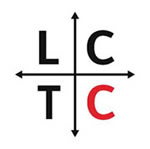NEWS & EVENTS
Appliable Linguistics Seminar 33
(Seminar on Language Science and System Science 99)
Time: 16:00, 21 December 2016
Venue: #304, School of Foreign Languages
(1)
Speaker: Dr Zhang Ranran
Title: Meaning Syndrome in a Song: Combination of Sounding and Wording
Abstract: As Knight (2010) ever points out, the coupling of experience and attitude, when shared by interlocutors, creates a bond. The current analysis shows that the meaning of sound comes from its patterns of rhythm and perceptually patterns of major pitch movement, which is related to the information flow at the grammatical level, information focus in special, and then gets its relation to the grammatical and discourse semantic configurations of language, both experientially and interpersonally. The evaluation in Lao Ba is easier to be shared by audience than that in single mode communication of language, because the indirect attitudes invoked from ideational materials in Lao Ba are more evaluative charged for their co-patterning with sound prosody, which is analyzed with the help of Praat.
(2)
Speaker: Dr Susanto
Title: Intonation and its Future Studies in Identifying Deceptive Speech: A challenging research agenda in forensic linguistics
Abstract: Detecting deceptive speech has been an interest to law enforcement because its result can be used for crime investigation. Studies on detecting deceptive speech have expanded such as in Bond and DePaulo (2006); O’Sullivan, Frank and Hurley (2009); Sporer and Schwandt (2006); and Vrij et al. (2008). In the talk, I propose an idea on modeling a mechanism for using acoustic cues in intonation system: Tonality, Tonicity and Tone (Halliday, 1967, 1970; Halliday and Greaves, 2008; Susanto, 2014), especially for its micro physical correlates (Catford, 1988; Hardcastle, William and Laver, 1999; Laver, 1994), and its potential integration with body gestures, eye movements and brain activities to identify deceptive speech. The mechanism implements linguistic knowledge and technology in forensic setting (Coulthard and Johnson, 2010; Matthiessen, 2009; Olsson, 2004). The idea of modeling the integrated mechanism hopefully can get its snowball effect and has a step forward for its realization in research activities. Once it is established, I believe that its outcome can strengthen the existing mechanism using polygraphs (Horvath, 1973), facial expression (Ekman and Friesen, 1976), body gestures (Burgoon and Buller, 1994), eye movements (Walczyk et al. (2012), and brain activities (Farah et al., 2014).







